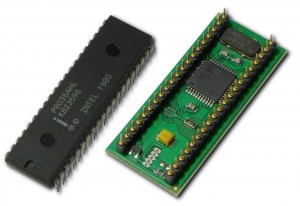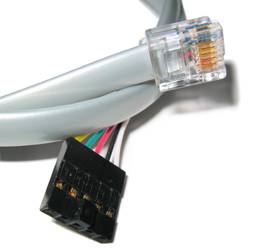Features
- 8-bit microcontroller, currently a Microchip PIC16F877A, though in production any PIC in a 44-pin TQFP package may be substituted per customer requirement.
- 20MHz operating frequency; as above, any crystal (<20MHz) may be substituted in modest production runs.
- Pull-up resistors to simulate intel style of output driver (open-collector with internal pull-up resistor).
- Programming header for in-circuit debugging and/or programming.
- Available pre-programmed with application as required.
- 5V operating voltage.
- 2.1″x0.9″ overall dimensions.
Description
The venerable i8035 has been available since the 1970s, predates the better-known i8051 processor, and though still available through grey-market, is now virtually impossible to find. The i8035 retrofit module will plug directly into an 8035 processor’s footprint, enabling regeneration of the application for a Microchip PIC processor. The programming header will permit interfacing to a PC via the Microchip ICD3, or PICkit3, allowing USB connectivity and live in-system debugging. With minimal expense, the new application can be developed; any existing installations can continue to use the original application hardware.
Please note, this is not a drop-in replacement for an 8035 processor. Code must be written to emulate the original application, and can be either C or assembly language. For more information on compilers, please visit the Microchip Technology Inc. web site. ROM or EPROM on the existing hardware can be either left in place, or removed; the external memory used by the 8035 isn’t used by the PIC. Also note that when dropping this unit into existing hardware, the crystal or clock source of the original hardware is not used; instead, the processor operates from a local crystal on the module.
For in-system code development, an in-circuit debugger or emulator is a must. Microchip’s in-circuit emulator will connect directly to the module, however due to space limitations on the module itself, a custom header has been used. As a result, a custom programming cable is required, also available from J-Tech.


